There’s Only Two Tommy Fleetwoods…
Celebrity Blue, golfer Tommy Fleetwood, has a namesake who is one of Everton’s greatest unsung heroes
It’s always good to see fellow Blues doing well. Have a look at ToffeeWeb’s section on celebrity fans; it’s an informative and amusing mixture of the nailed on, the apocryphal and the downright dodgy. We have amongst our number an Oscar winner in Dame Judi Dench, star of stage, screen and the Moneysupermarket ads. She owes her allegiance to her late husband Michael Williams, although she did appear in Z-Cars in 1963, when John Moores’ ‘Mersey Millionaires’ were reigning League Champions. Another showbiz multi award winning blue is Jodie Comer whose dad even works for Everton; it is surely only a matter of time before the divine Ms C adds to the Evertonian Oscar collection. We also have big hitters in the world of business and finance; big blue Sir Terry Leahy built-up the retail titan that is Tesco and the former governor of the Bank of England, Sir Mark Carney, is one of us. In politics we have the King of the North himself, Manchester metro mayor and scourge of central government Andy Burnham. Surely these illustrious talents would make a positive difference if invited into the corridors of power at the Royal Liver Building?
In the world of sport a pre-eminent name on the list of famous Blues is that of golfer Tommy Fleetwood. His regular top ten finishes in major tournaments gives hope that he can add his name to one of the golf’s four classics. In the most individual of sports his invincible partnership with Francesco Molinari was the cornerstone of the last European Ryder Cup win, and he also forms a formidable team with his caddie and fellow blue Ian Finnis. If anything, Ian is more blue than Tommy; his grandfather Harry Finnis made one first team appearance and he is is even married to Rachel Brown-Finnis formerly of Everton Ladies and England. She is now making a big name for herself in football punditry; give us Rachel over Danny Murphy or Garth Crooks any day.
But Tommy has one blue ace to play; he has a namesake who is one of Everton’s greatest unsung heroes.
The ‘other’ Thomas Fleetwood was born on 6th December 1888, one of eleven children of Elizabeth and Peter Fleetwood. Peter was farming land off Simonswood Lane in Kirby when Tom, as he was always known to the family arrived; however within a couple of years they had relocated to Willows Lane in Bolton 18 miles away. In the 1901 census Tom was listed as a 14-year-old cotton piecer. His siblings had occupations including working in a bottling plant and, in the case of 10 and 11-year-old Joseph and Robert, newspaper vendors.
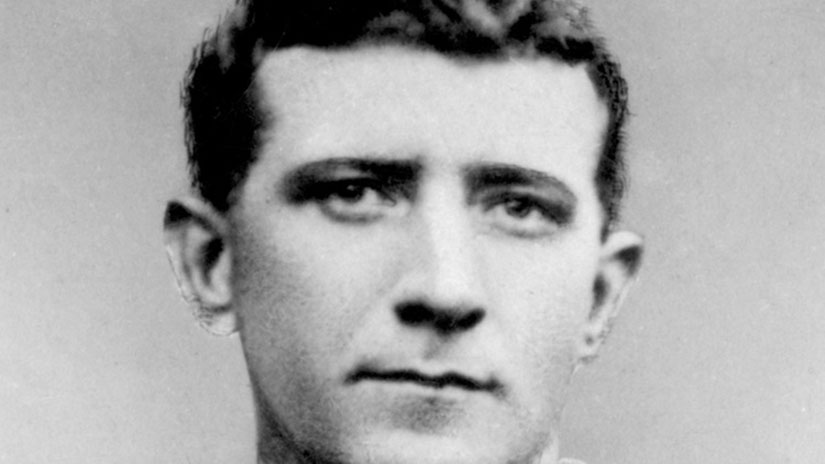
Tommy Fleetwood from Everton FC
Tom Fleetwood’s earliest club football was with Bolton area junior and church teams, playing on the right wing or at inside-forward for Nebo Excelsior and Hayne Street Mission. A step up saw him play a handful of games for Lancashire Combination outfit Atherton before throwing in his lot with St. George the Martyr. A cup final hat-trick for the latter paved the way for Bolton Wanderers to play him in their reserve side in the 1906/7 – he also made some appearances for Hindley Central and, in 1908, caught the eye of Rochdale of the Lancashire Combination. In just shy of three seasons with the Dale he racked up a healthy goal tally and drew the attention of Football League clubs.
Former Everton captain Jack Taylor made two scouting trips to assess the Rochdale man early in 1911 and reported back favourably to the board. Described in one report as a ‘most promising forward’ he was signed by Everton for £425 in March. Family legend has it that he had the choice of joining Liverpool and Everton; newspaper reports of that time refer to another club in the ‘county palatine’ being keen but being deterred by the £500 asking price. Since the phrase refers to the County Palatine of Lancaster, effectively the whole of Lancashire there are many other possibilities of course, but it’s a nice thought.
The 23-year-old went straight into the Toffees’ first eleven, at inside-right, for a drab home draw with Bradford City. He kept his place in the team and opened his scoring account with the only goal of a match against Spurs at White Hart Lane. In the final match of the season, a narrow home victory over Bristol City, he was switched to centre-half and did well in spite of his comparative lack of height for this role (5’81/2“). And so it came to pass that, in the following season, he was deployed as the pivot in the half-back line with the exception of three occasions when he was tried at centre-forward. It seems that Tom took this change in his stride and he was an ever-present in the 1912/13 season). Things continued in this vein over the following two seasons, with the centre-half making sporadic appearances spearheading the attack.
After a very disappointing 1913/14 season which saw Everton finish a poor 15th and suffer FA Cup humiliation by lowly Glossop the directorate had fresh ideas for 1914/15. Secretary/manager Will Cuff persuaded Glasgow Rangers centre half Jimmy Galt to sign on, partly by mentioning the many championship quality golf courses on Merseyside to the golf mad player. Tom Fleetwood was moved across to wing-half to accommodate his new team mate. He showed a level of versatility that would have made Jack Taylor, Sandy Brown and Alan Harper proud and simply got on with the job in hand; he made 39 appearances at wing half and provided the platform for the team to advance on the League title.
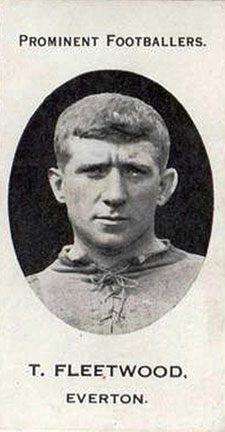
A contemporary cigarette card of Tommy Fleetwood
1914-15 was a season unlike any other that Everton have ever played, if only because it took place entirely during wartime, with increasing criticism as the expectations of a short war proved very wrong. From a purely football perspective it was full of twists and turns with Everton’s superb away form making up for a very poor record at Goodison. They reached the FA Cup semi-final only to lose unluckily to Chelsea, and appeared to have lost their chance of the title with disastrous form over Easter 1915. However the team dug deep and dragged themselves back into the race, with Tom Fleetwood as ever to the fore.
On the run in, the Toffees were without the services of key players for the visit of West Bromwich Albion. With top scorer Bobby Parker stricken with throat trouble, Tom was thrown up front to lead the line for the first time that season. He responded, in typical fashion, scoring from close-range to secure a 2-1 win. All that this good – if not great – Everton side needed to secure the title was a draw on the final day of the season – a home tie against Chelsea. Tom was on target to cancel out Chelsea’s opener – and in the second half Bobby Parker hooked in a brilliant strike to make it 2-2, which is how the match ended. For his efforts Tom received a medal plus a £35 bonus.
Tom did not serve with the forces in the First World War, instead he worked for an engineering firm. He must have been sufficiently valuable as a worker to have reserved occupation status when conscription was introduced at the beginning of 1916. Life may not have been easy however as a concerted campaign was waged to get fit young men like Tom to volunteer; this often took the form of young women giving men white feathers and making accusations of cowardice. Against this was the more complex truth that WW1 was a conflict of industrial production which was impeded by the loss of skilled men.
Whatever his off field experiences, Tom was able to continue to turn out for the Toffees in a ‘Lancashire Section’ of the War Football League competition (the FA Cup was not contested during the war years). He was their highest appearance-maker, scoring five times in 121 outings. Although appearing in Football league representative sides, he was never capped by England in an officially recognised match. He was selected for a victory international fixture against Scotland at Goodison Park in April 1919 and in the return fixture at Hampden a week later.
When regular football returned for the 1919/20 season, Everton had lost the services of Jimmy Galt, who had suffered shell shock during the war and Harry Makepeace, who had retired to concentrate on his cricket career. The formerly prolific Bobby Parker was hindered by a wound probably sustained in the 2nd battle of Gaza in Palestine. Tom, with other veterans like goalkeeper Tom Fern and Sam Chedgzoy, continued to give yeoman service to the Blues cause.
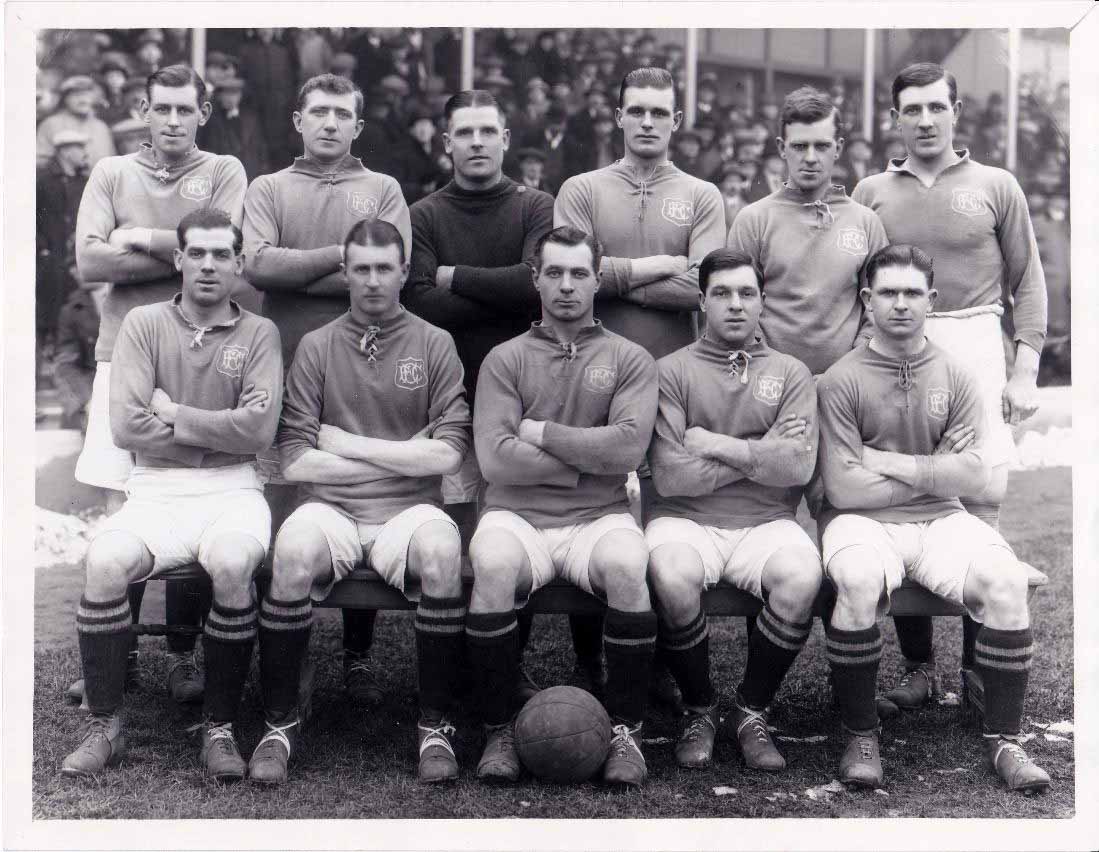
Everton 1920-21 with Tommy Fleetwood second from the left on the back row
The Old Warhorse (as some pressmen described Tom) captained the side in his 37 appearances - a disappointing season with a 16th place finish. He continued in similar vein at wing-half and centre-half in the following two seasons but, in the 1922/23 campaign was restricted to 25 appearances. He’d been awarded a benefit match, collecting a proportion of the takings from a match against Sheffield United in April 1921 – sadly the indifferent form of the team (including a 6-0 trouncing by Crystal Palace in the FA Cup) saw a modest 30,000 come through the turnstiles. Tom could not play in the match, owing to a heavy cold.
The end, when it came in August 1923 was sudden and surprising to observers of comings and goings at Goodison. Davie Ashworth of Oldham Athletic had watched the half-back in a pre-season trial game and a £750 transfer fee was negotiated. Tom exited Goodison after 285 appearances for the Toffees (in addition to his 121 War League outings). The stint at Boundary Park was, in comparison, startlingly brief. He left, age 35, after a mere five appearances for the Latics. Next stop was Chester, whom he captained in the 1924/25 season before hanging up the boots – but not of his own volition. In September of that year, having failed to be taken on by any club that he had approached, he made an appeal through Bee at the Liverpool Echo. Tom wrote:
Just a few lines, hoping it finds you in the best of health, as it leaves me. Well, I am asking a favour of you; do you think you can get me a club? I am dying for a game. I just feel as fit now as I ever did, and if you get me a club, I won’t let you down. I have thought many times of writing to you but was waiting to see if there was anything doing at clubs to which I wrote.’
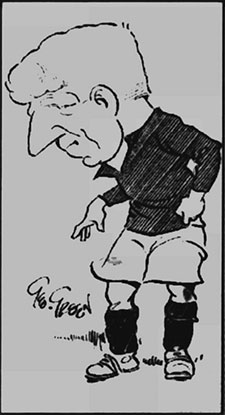
There is no record of a club taking up this offer – although it’s not improbable that he turned out for local teams. Five years after leaving, Tom returned to his old haunt when taken on as an assistant groundsman at Goodison Park in September 1928. Within a year his remit would extend to scouting duties. He performed both roles until the Second World War, with family tradition suggesting he may have scouted both Bill Dean and Tommy Lawton. One player he definitely watched was Ted Sagar’s younger brother, in Thorne, but the outbreak of war scuppered the teenager’s chance of a career with the Blues. He seems to have continued to be a popular figure; Tom befriended the club’s full-back Billy Cook and the Irishman would sometimes take him for a spin in his car to visit family in Rochdale.
Sadly and rather mysteriously Tom’s association with Everton ended on a downbeat note. During the war years Tom suffered some form of industrial accident which ended his employment; in 1942 a claim was settled on behalf of the club by the Royal Insurance Co. for £700.
Tom had married Mary Howcroft (known as Polly) in Bolton in 1913. They went on to have four children: Tom Jr., Amy, Irene and Frank. The final years of his working life were spent living with at least two of his children, and their families, at 5 Fazakerley Road, a Victorian terraced house just off Rice Lane. He was employed as a dock watchman (possibly for Furness Withy), working shifts including evenings and nights. Tom’s granddaughter, Jean, recalls that he would get home from work in the evening, have his tea, a bottle of Guinness, a bath and then head to bed, ready to rise for his next shift.
In 1960 he penned this impassioned letter in tribute to his beloved club to the Echo, which was printed in full:
I was very interested in your kindly notes about the old timers who wore the famous blue of Everton FC. It was an honour and privilege for me to be a member of the Everton half-back line in the senior team 1910-1923. My memory is still full of nostalgia memories. I am 74 years of age, as fit as a fiddle and still able to do a long, hard day’s work, an ardent supporter of my old club and would most certainly like to sit behind the director’s box in such good company if the opportunity is given.’
It is not known if the club ever did offer him the VIP treatment at a match.
After the death of Polly, he relocated to Bebington on the Wirral, living with Irene, son-in-law Trevor and grandson Ken. Like his former teammate Tom Fern, Tom was a keen gardener and spent much of his final years tending the flowers at 30 Quarry Avenue. He’d have Guinness delivered and would often get ticked off by Irene for his consumption of the stout. Although quiet he’d open up after a couple of drinks; he’d watch football on TV but, like many ex-pros, rarely spoke about his footballing days to family members. It was like a place that he had no inclination to return to.
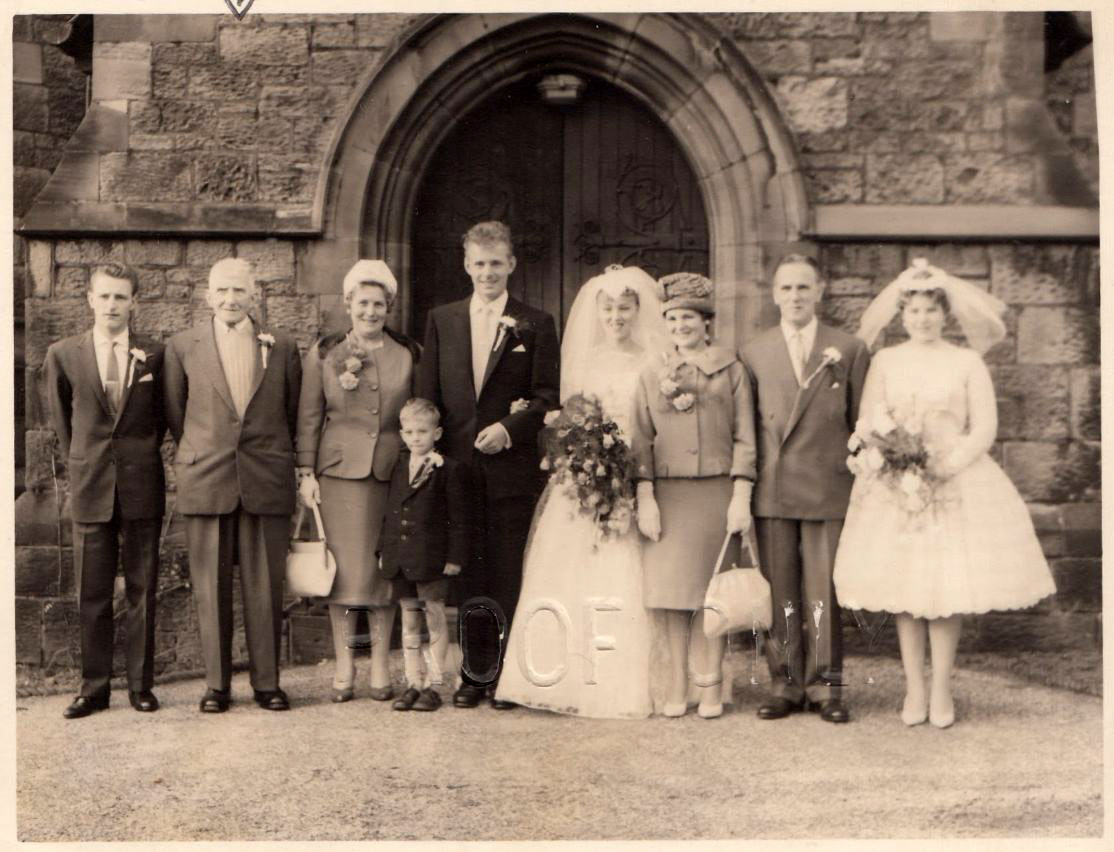
The grand old war horse - Tommy Fleetwood second from the left at a family wedding
Having suffered a stroke at home, he passed away on 23 April 1966. This grand old man of Goodison was cremated at Landican four days later. Neither of Tom’s sons followed him into professional football, however Les and Steve, his grandsons through Frank became professional cyclists, riding for the Raleigh and other teams in the 1970s and 1980s. And if the family memory of Tom Fleetwood turning down Liverpool for Everton is correct there is one final irony; as far as we can tell the land that the Fleetwoods were farming when Tom was born is now part of the reds’ training centre in Kirby. Maybe they would consider putting up a commemorative blue plaque?
As to a connection between Tom and Tommy, other than having the same name and providing us with a catchy title we cannot see anything in the genealogical records. However you never know; when Tommy Fleetwood wins his first major he may be invited onto Who Do You Think You Are? and a more distant link may emerge. We hope it would make Tommy Fleetwood proud, for the one and only Tom Fleetwood is an Everton hero who we hope is now just a little less unsung. We have been singing his praises to anyone who would listen.
The final word on Tom however must go to the great Will Cuff, who signed this Toffees stalwart from Rochdale. He said that this great club man ‘would have walked across molten lava for Everton without getting blisters.’
That is the highest praise.
Rob Sawyer and Pete Jones.
This is dedicated to another unsung Everton hero; Mo Marley. Mo is very modest about her role in the development of Everton Women and the England setup that produced the European Champions this year. We think she has nothing to be modest about, indeed it would be good to see her stature in women’s football celebrated by Everton Football Club.
Our thanks go to various members of the Fleetwood family for their assistance with research for the article.
Reader Comments (7)
Note: the following content is not moderated or vetted by the site owners at the time of submission. Comments are the responsibility of the poster. Disclaimer ()
2 Posted 28/09/2022 at 08:48:50
These articles bring some old names to life.
A most enjoyable way to avoid actually doing some work while at my computer!
3 Posted 28/09/2022 at 13:53:36
4 Posted 28/09/2022 at 16:06:46
5 Posted 30/09/2022 at 10:29:53
Judi Dench is an Evertonian? We play in Royal Blue. We are footballing Royalty.
I've seen loose connections from Paul McCartney due to his dad's apparent Upper Bullens season ticket status. But I've always been suspicious of his Kenwright like can switch between the two tribes status.
Very interesting point that our away form was better during the war. I'm not comparing, but parallels to the recent pandemic when a lot of teams, ourselves included seemed to fair better away?
The comment on sitting in the Director's Box and who should or shouldn't. Very fitting!!
Final comment based on the team photo included in the article and one of my repeats. Blue socks or white?
Or black? Remember the 90s blue/back striped ones?
6 Posted 30/09/2022 at 11:51:16
7 Posted 03/10/2022 at 13:06:54
Add Your Comments
In order to post a comment, you need to be logged in as a registered user of the site.
Or Sign up as a ToffeeWeb Member — it's free, takes just a few minutes and will allow you to post your comments on articles and Talking Points submissions across the site.
How to get rid of these ads and support TW

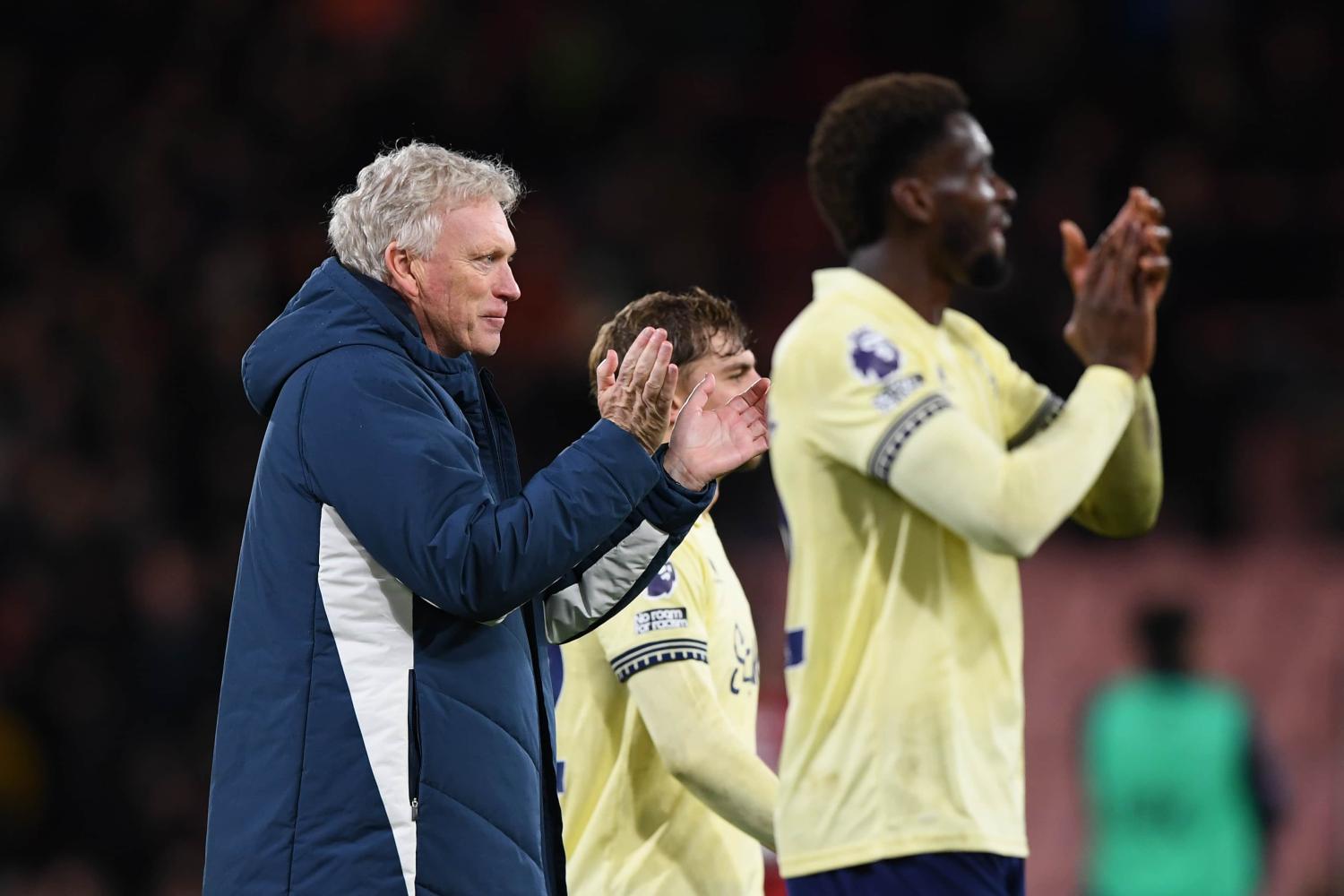


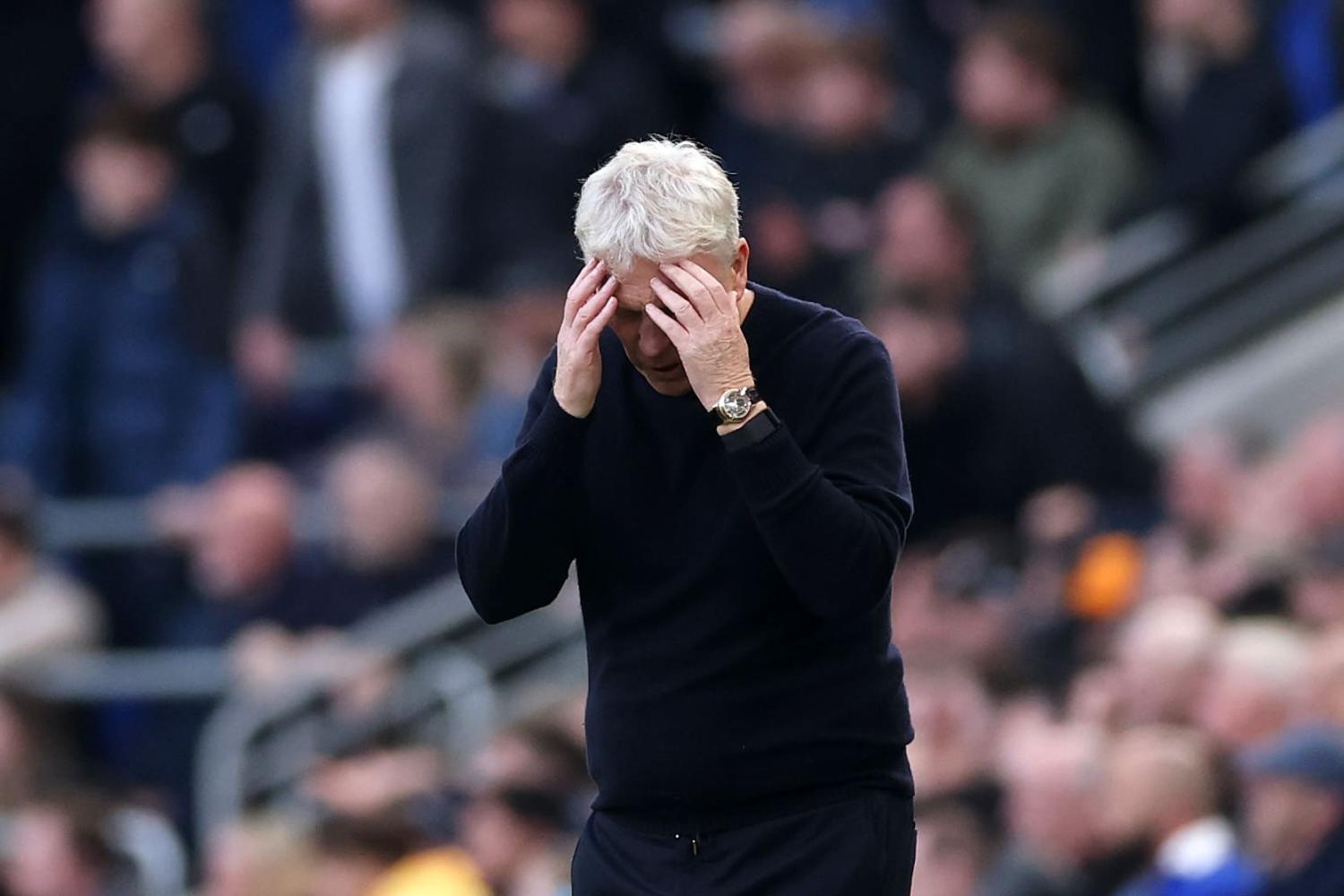


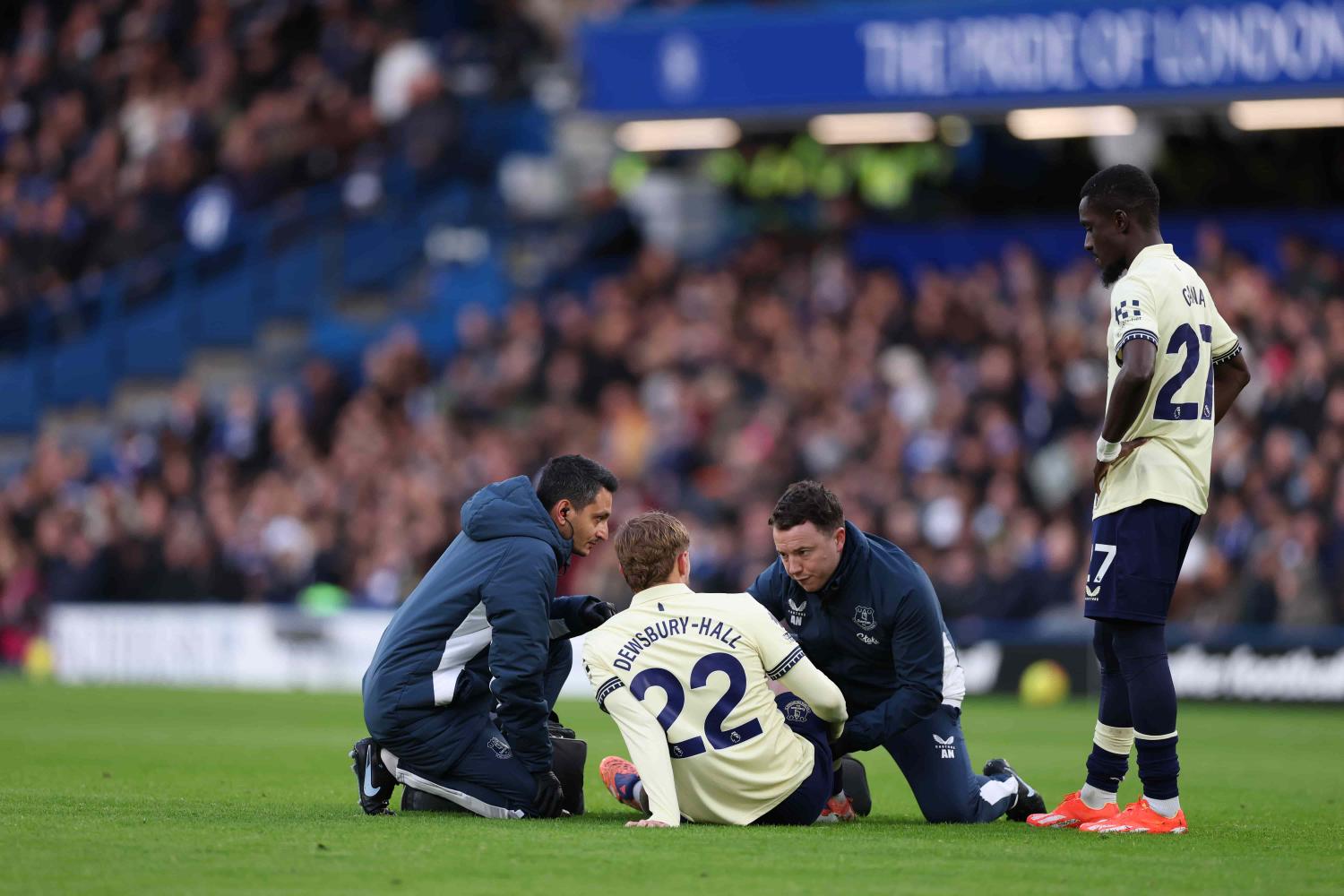
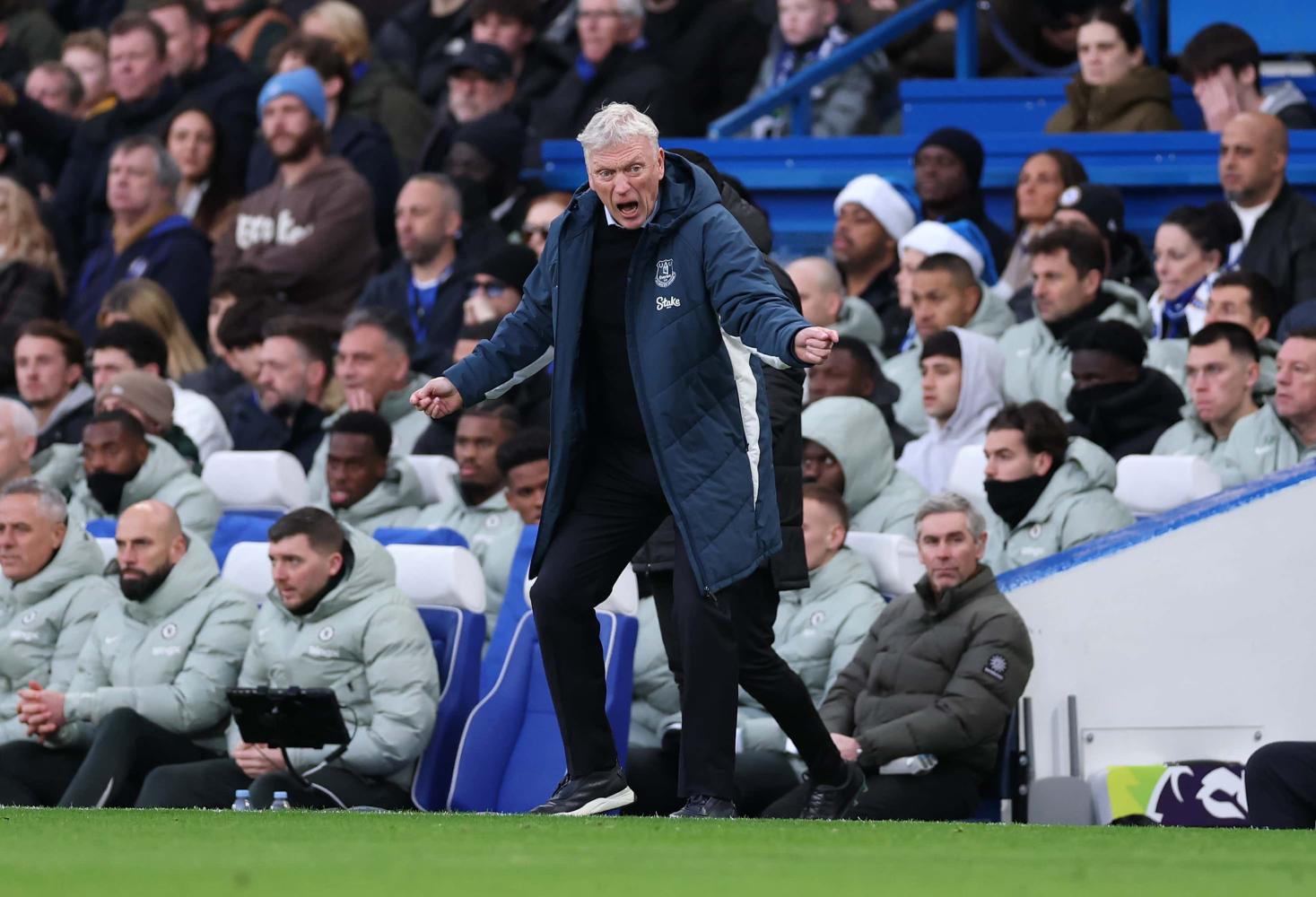


1 Posted 28/09/2022 at 08:37:00
Many thanks for all your efforts to bring Tommy to the forefront!